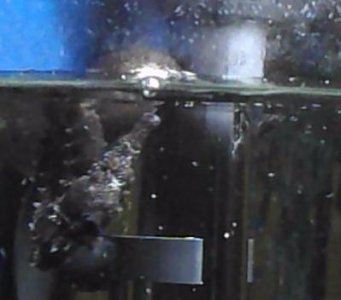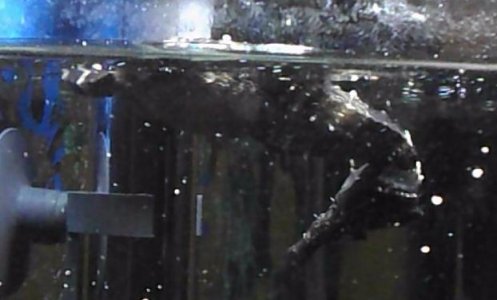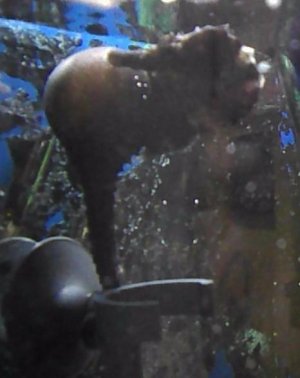How can you tell if a seahorse has gas bubble disease or if he is in fact pregnant? I have an 8month old erectus male that for the last couple of weeks has been seeming like he is pregnant and staying curled up around the top of my heater. I have been thinking that he was staying up there to be better able to feed....by the way, he has been eating great....same appetite as usual...his coloration has been good (if he ever gets stressed or scared he turns a real dark brown, and his markings go away) he has not been doing that. Thinking he is pregnant, we set up a maternity tank to move him over and that is when I noticed that he floats and doesn't swim down into the water. After reading up to see if this was normal I discovered that seahorses can get gas bubble disease....so many different things printed about it...I am confused. By my calculations from when he started nesting....21 days will be in 4 more days. BUT...if he is sick and not pregnant then I would like to try to help him. I have raised seahorses in the past(about 10 years ago) and only dealt with females mostly...so this is all new to me but I am devoted to learning. By the way, while reading up on pregnant frys is where I first heard of the disease and it said during pregnancy if some of the babies die while in the pouch it can cause gas to build up in the pouch and they will float up to the top like a bobber. When I read that warning bells and whistles went off...but then when you disturb him he does submerge and act irritated that you disturbed him. Please help! I'm so confused!!! What is normal and what is not?
Pregnant Seahorse or Gas Bubble Disease?
- Thread starter Apachee
- Start date



